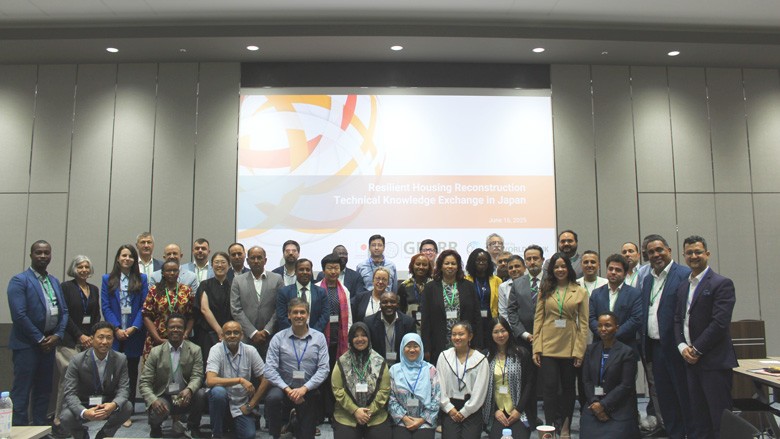Background
The urgency to develop disaster-resilient housing is driven by intensifying natural hazards, rapid urbanization, and the growing vulnerability of at-risk populations. Despite housing being a fundamental human right, the world faces a crisis with 100 million people unhoused and 1.8 billion in inadequate conditions. By 2030, 3 billion people will need safe, affordable housing, requiring 96,000 new units daily. Natural hazards and climate change disproportionately affect countries, complicating their capacity to ensure secure housing. Post-disaster reconstruction provides an opportunity to "build back better," integrating disaster risk reduction into housing and infrastructure. However, A review of 45 years of the 擒걸쬠犬’s housing reconstruction projects highlighted that challenges such as institutional coordination, local government capacity, market constraints, design gaps, and land and property data issues hinder effective resilient housing reconstruction. Addressing these challenges is crucial for timely and effective housing solutions.
This technical Knowledge Exchange aims to draw actionable insights from Japan’s extensive experience in disaster risk management, particularly in addressing the persistent challenges of housing recovery and resilience after major natural disasters. As one of the most disaster-prone countries in the world―facing frequent earthquakes, tsunamis, typhoons, landslides, and floods―Japan has continuously refined its approaches to disaster preparedness, response, and recovery, especially in the housing sector. Over the decades, the country has built a comprehensive and evolving institutional, legal, and technical framework to improve structural resilience and facilitate efficient post-disaster reconstruction. The Technical Knowledge exchange covers key features of Japanese resilient housing reconstruction, including but not limited to:
a.
Preparedness over post-disaster decision-making 쭯 Japan minimizes the need for ad hoc decision-making following a disaster. Budgets, policies, role and responsibilities, and procedures are established in advance to ensure a rapid and coordinated response when disasters strike. This "preparedness" is based on continuous improvement by learning from every disaster recovery experience over the past century.
b.
Forward-looking, Localized design 쭯 Disaster-affected areas often serve as innovation hubs for broader societal trends. Japan has introduced adaptive solutions such as two-story wooden
2
temporary housing and elderly-friendly designs, demonstrating a proactive approach to meeting both current and future housing needs.
c.
A well-balanced approach to speed, quality, and resilience 쭯 Through continuous improvements in planning, procurement and construction processes, Japan has achieved remarkable efficiency, delivering 50,000 temporary housings in six months after the earthquake and tsunami in 2011. Local governments, in partnership with the private sector, play a critical role in achieving this.
While the main focus of this technical knowledge exchange is on “post-disaster reconstruction”, the scope will expand to a broader capacity and ecosystem for resilient housing development. A country’s journey to improve resilience of housings can depart from anywhere (resilient housing reconstruction, regular housing capacity development, or housing reconstruction preparedness), but the outcome will be maximized if the society can create a positive cycle of housing stock/capacity improvement as Japan demonstrated.
Objectives
This knowledge exchange will provide an opportunity for government officials and 擒걸쬠犬 experts to learn directly from Japan's successful strategies and help design effective housing (reconstruction) programs to improve disaster resilience. Specifically, it aims to:
a.
Facilitate peer-to-peer learning 쭯 Share insights on common and unique challenges in housing projects and reconstruction, highlighting successful case studies and adaptable strategies.
b.
Draw lessons from Japan’s experience 쭯 Examine Japan’s post-disaster housing reconstruction efforts and policy reforms that have enhanced preparedness and long-term resilience.
c.
Participate in a collective construction of solutions to integrate resilience in housing programs 쭯 Join a facilitated discussion to explore how the main principles behind Japanese’s housing and reconstruction programs can be applied to different contexts.
1. Participants
Approximately 45 government officials and the 擒걸쬠犬 staff from across Indonesia, Pakistan, India, Nepal, Kenya, Mozambique, Senegal, T㉨rkiye, Romania, Ecuador, Dominican Republic, and Palestine.
2. Organizers
This knowledge exchange is organized by the Tokyo DRM HUB, GFDRR in collaboration with the Global Program for Resilient Housing, GFDRR and Urban/Housing team in the 擒걸쬠犬 hosted with support from Ishikawa Prefectural Government and other institutions/experts in Japan.
3 Summary Agenda
June 16쭯20, 2025 | Tokyo & Noto, Japan
This immersive program combines site visits, expert panels, and collaborative sessions to explore Japan's housing recovery efforts following natural disasters, emphasizing real-world challenges and innovative solutions.
| Date |
Location |
Theme / Activities |
|---|
| Mon, June 16 |
Tokyo |
- Opening & Participant Introductions
- Introduction to Resilient Housing Reconstruction
- Japan's Housing Reconstruction Overview
- Group Work
|
| Tue, June 17 |
Tokyo ∪ Noto |
- Housing damage, Disaster Waste Management
- Temporary Housing
- Community Engagement
|
| Wed, June 18 |
Noto ∪ Tokyo |
- Recovery of local shopping street and industries
- Temporary Housing
- Ishikawa Prefecture Presentation
|
| Thu, June 19 |
Tokyo |
- Session 1: Urban & Dense Area Reconstruction
- Session 2: Transitional Shelter Approaches
- Session 3: Collaboration (Private Sector, NGOs, etc.)
- BRR Report Public Seminar
|
| Fri, June 20 |
Tokyo
|
- Group Work & Knowledge Review
- Group Presentations
- Wrap-Up & Closing Remarks
|

